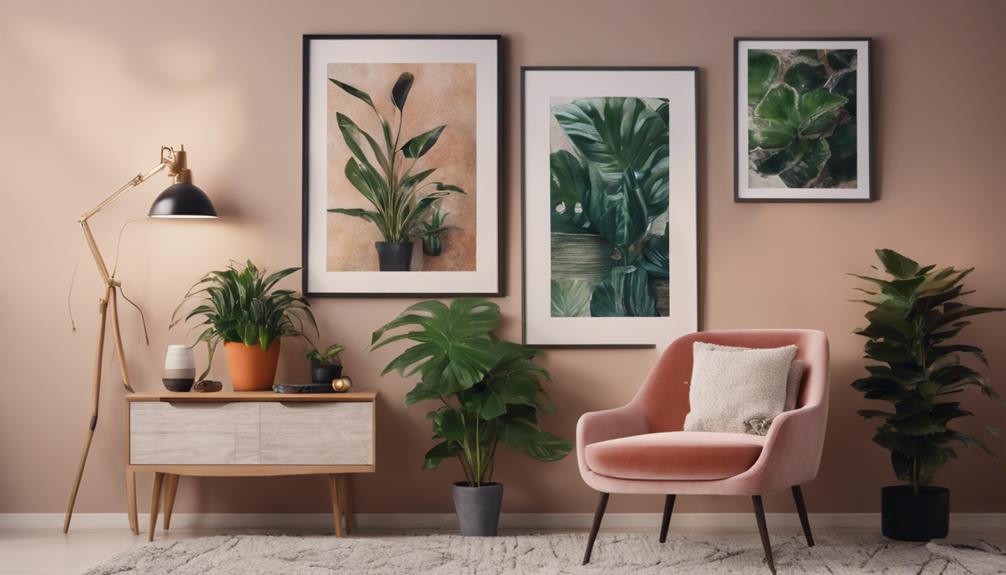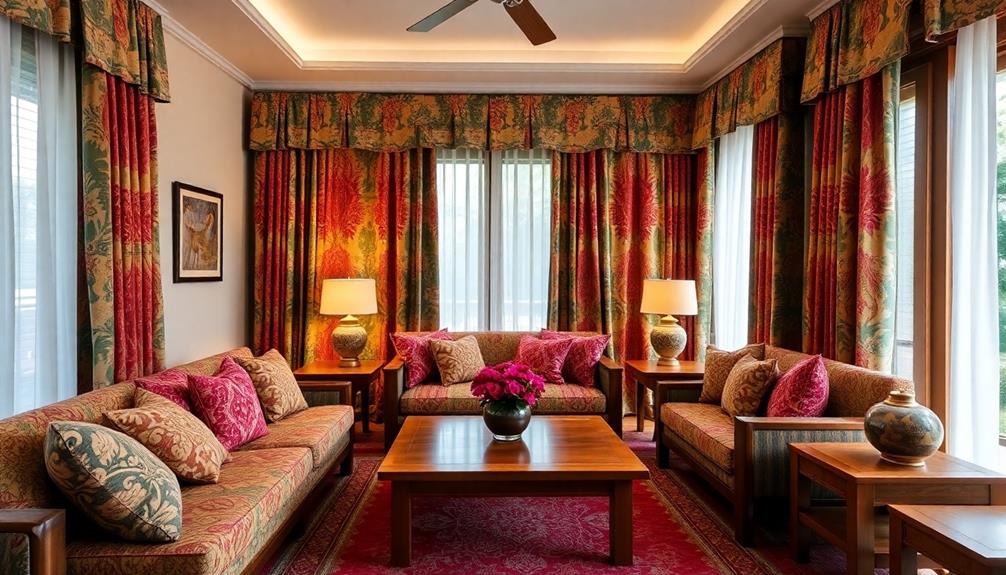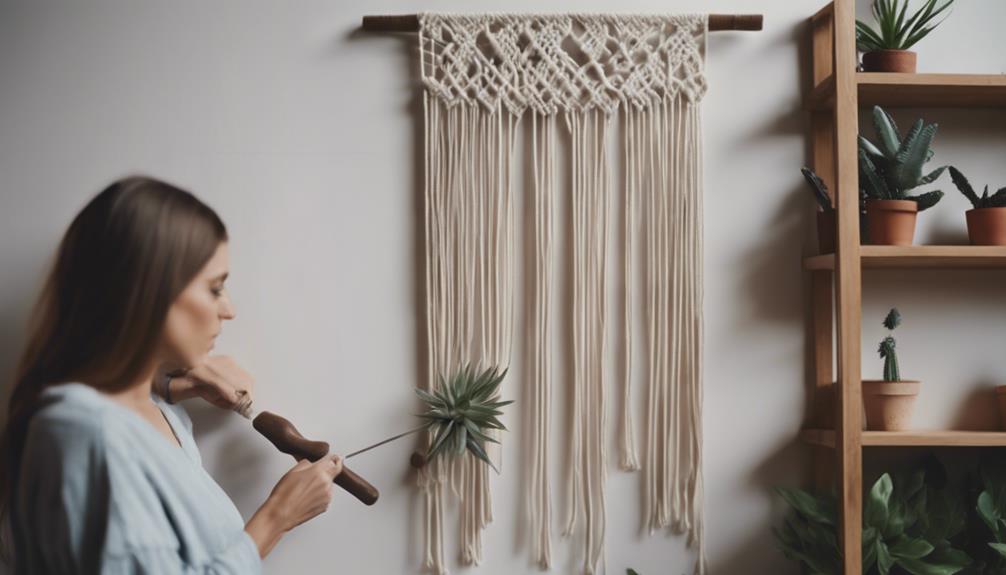To become proficient in the art of wall staging, focus on achieving balance and cohesion. Begin by mixing various sizes of art; placing small pieces on large walls can look sparse, while too many small pieces on smaller walls can lead to clutter. Group artworks that complement each other in color and style, and hang them at eye level, ideally between 58 to 65 inches off the ground. Consider alternative displays such as floating shelves or art ledges for added versatility. Plan your layout carefully for a polished effect. If you’re interested in learning more tips and techniques, there’s a wealth of information to explore! Once you have mastered the fundamentals, think about incorporating stylish living room accents to elevate your wall staging. This could involve decorative mirrors, wall sconces, or even sculptural elements to introduce depth and interest to your display. Experiment with diverse textures and finishes to craft a dynamic and visually pleasing arrangement that reflects your unique style. With a deliberate approach, your wall staging can become a standout feature in any room.
Key Takeaways
- Consider size balance when selecting art to avoid overwhelming or underwhelming your wall space.
- Create a cohesive gallery wall by choosing pieces that complement each other in color, style, and subject matter.
- Hang artwork at eye level, typically between 58 to 65 inches, for optimal visual impact.
- Use consistent frame styles to unify different art pieces while mixing sizes for added interest.
Importance of Size in Art
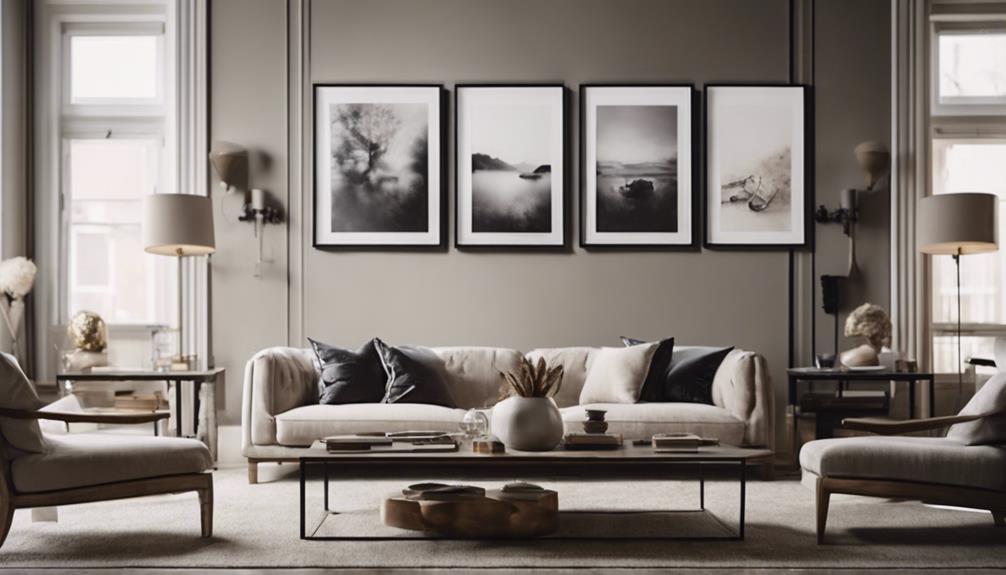
When choosing art for your walls, remember that size plays an essential role in achieving a balanced and visually appealing display. A small piece on a large wall can feel lost, while too many small pieces on a small wall may create clutter.
To maintain harmony, consider using a mix of sizes. For larger spaces, group smaller artworks together to simulate the impact of a single large piece. Balance is key; avoid overcrowding while filling larger areas effectively.
Think about the visual weight of each piece and how they interact with one another. Thoughtful placement guarantees your art enhances your space, creating a cohesive and inviting atmosphere that reflects your personality.
Always prioritize proportion and balance in your selections.
Creating a Cohesive Gallery Wall
To create a cohesive gallery wall, select art pieces that complement each other in color, style, and subject to guarantee visual unity. Consider using a consistent frame style or color to tie everything together. Group different sizes and shapes to add interest while maintaining balance.
Here's a table to help you visualize different art styles and how they can work together:
| Style | Color Palette | Subject |
|---|---|---|
| Abstract | Bold and Bright | Shapes and Lines |
| Black & White | Monochrome | Portraits |
| Nature | Earthy Tones | Landscapes |
Mixing these styles thoughtfully can create a stunning gallery wall that draws the eye and enhances your space.
Optimal Picture Placement Techniques
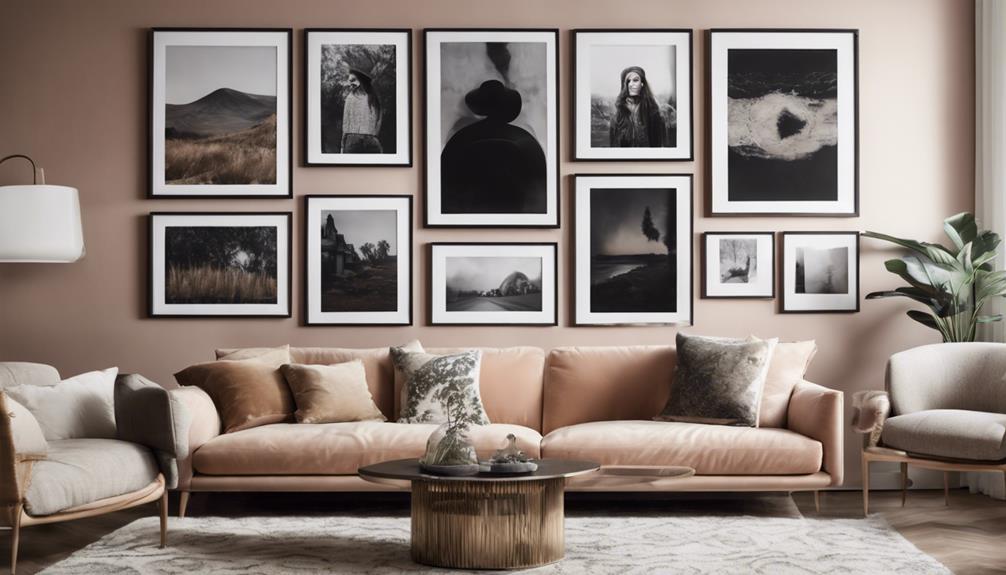
Hanging pictures at eye level guarantees they're easily appreciated and creates a balanced look in your space. Aim for the center of your art to be between 58 to 65 inches from the floor, ensuring most viewers can admire it without straining.
When designing a gallery wall, treat the entire collection as a single unit, positioning the centerpiece at eye level. Keep a maximum gap of 4 to 6 inches between the top of furniture and the bottom of the art. In rooms where people sit, consider lowering the height for better visibility.
Start with the largest piece, arranging smaller items around it for a harmonious display. Space them 2 to 3 inches apart for a clean, intentional look.
Effective Art Hanging Strategies
Effective art hanging starts with careful planning and the right tools to assure a polished display that enhances your space.
First, measure your wall and select pieces that fit well—avoid overcrowding small walls or using tiny art on expansive surfaces.
Aim to hang artwork at eye level, typically between 58 to 65 inches from the floor.
For gallery walls, treat the entire collection as a unit, starting with the largest piece and arranging outward.
Use full-sized paper templates to visualize layouts before drilling, marking correct mount locations to guarantee precision.
Remember to account for weight when choosing mounting hardware, assuring each piece is secure and beautifully presented.
A well-organized approach transforms your walls into enchanting focal points.
Exploring Alternative Display Options
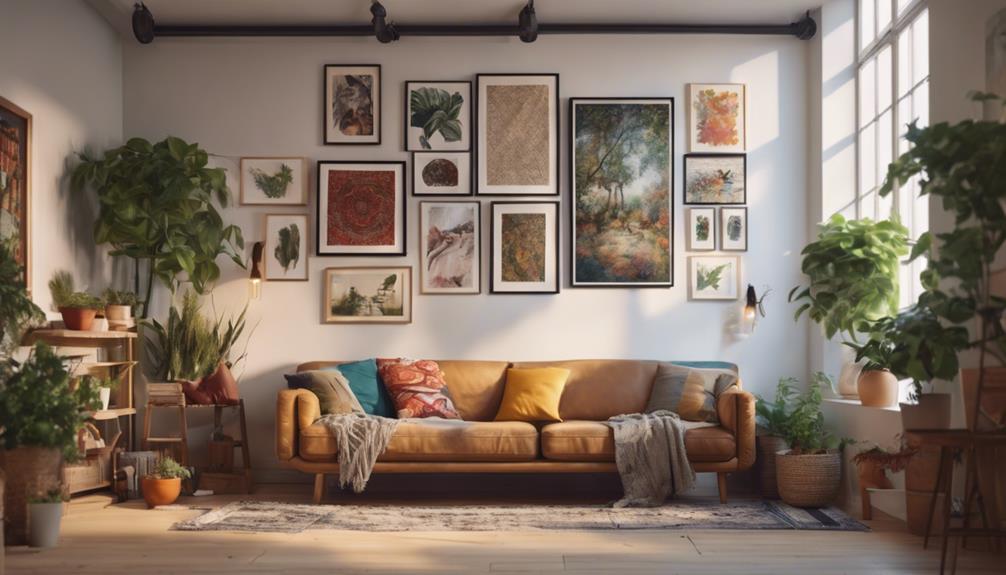
While traditional wall hanging remains popular, exploring alternative display options can add versatility and creativity to your space.
Consider these four ideas to elevate your decor:
- Floating Shelves: Showcase art and decor together, allowing for easy rearrangement and personalization.
- Art Ledges: Create a dynamic display where you can layer different pieces without the commitment of permanent hanging.
- Clipboards or Wire Grids: Use them to interchange art easily, making it simple to refresh your look.
- Freestanding Easels: Present larger pieces in a creative way that draws attention and adds dimension.
Conclusion
Now that you've discovered the secrets to wall staging, imagine transforming your bare walls into a vibrant tapestry of color and texture.
With larger pieces commanding attention like a bold sunrise and smaller artworks dancing around them like twinkling stars, your space will come alive.
Embrace the balance of scale and style, and let each carefully chosen piece tell its own story.
Your walls aren't just boundaries; they're a canvas waiting for your unique masterpiece to unfold.
